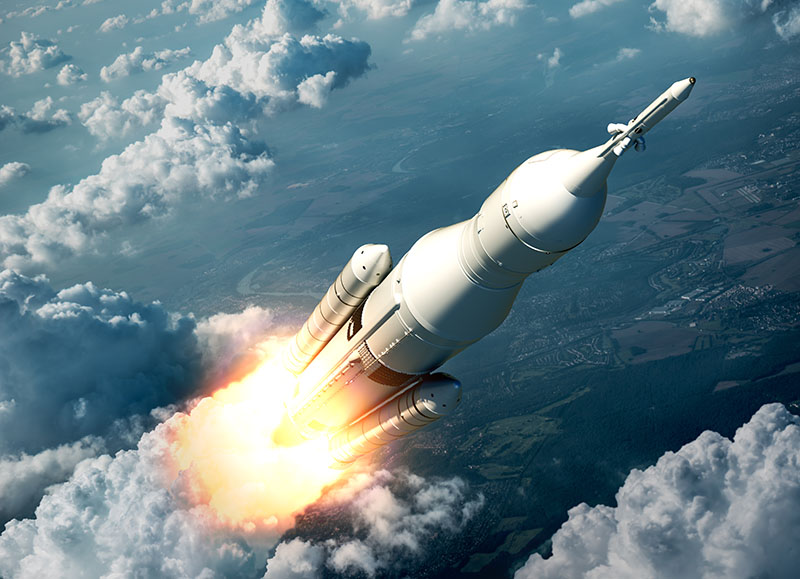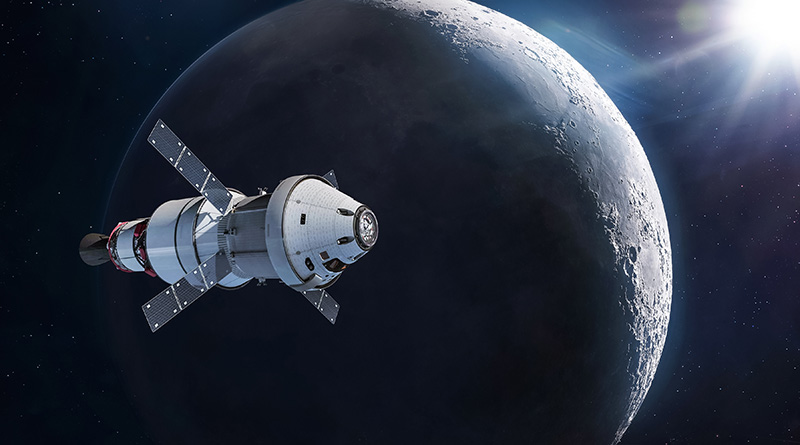Market Connector: Lunar Exploration
.jpg)
A resurgence in lunar exploration is underway and a new age in space exploration has begun.
Led by international space agencies and private industry, the push to send astronauts to the moon's surface once again is in motion. But a host of innovative and groundbreaking technologies and a significant amount of cooperation is required to take things a step further than the Apollo missions of the late 1960s and early 1970s.
This time we’re just not planning a short visit. The goal of the next generation of lunar missions features further exploration of the lunar surface, the mining of water ice and rare lunar resources, and even the development of a permanent lunar habitat.
Who: NASA, international space agencies, and private space companies such as SpaceX and Blue Origin are leading the charge to explore the moon once more. The push for future lunar missions comes as the global space economy is projected to reach $800 billion within five years.
NASA is spearheading the human return to the moon with the upcoming series of Artemis manned lunar missions, though these complex missions are an international public and private collaboration. SpaceX is contributing with its Starship spacecraft for the Artemis III and IV missions, while Blue Origin is providing NASA with its Integrated Landing Vehicle (ILV) lander for Artemis V.
The European Space Agency is also contributing to the missions with the service modules for NASA’s Orion crewed spacecraft that will provide Orion - the Artemis astronauts’ primary habitat - with its primary power and propulsion systems.
These are just a few of the key contributors to this massive undertaking.

What: A resurgence in interest and investment in moon landings and lunar technology has gradually gained momentum. This renewed interest in lunar exploration involves future manned missions, robotic exploration, and the development of cutting-edge technologies to support a sustained lunar habitat one day. Lunar habitats, resource utilization, and advanced propulsion systems are among the key focus areas. Advanced interconnect systems that can not only withstand, but thrive, in the punishing lunar environment will be key to the success of these technologies.
NASA’s Artemis missions stand out as the first planned crewed missions to the lunar surface since 1972. In addition to a manned moon landing, a modular and reusable outpost in orbit around the moon dubbed the Lunar Gateway is intended to be deployed through Artemis as a staging point for future lunar surface missions.
Where: Unlike the Apollo missions that landed on and around the lunar equatorial regions, the lunar south pole is the primary target of upcoming manned and unmanned missions to the moon. The lunar south pole region contains water ice in permanently shadowed craters, making it a valuable resource for future missions and, eventually, a permanent human presence.
The lunar south pole also features craters that preserve a fossil record of the early solar system, providing insights into its history. The moon’s 1.5-degree rotational axis ‒ much shallower than the Earth’s 23.5-degree rotational axis ‒ means some craters at its poles never see sunlight.
 Depiction of the Orion spacecraft in orbit around the moon.
Depiction of the Orion spacecraft in orbit around the moon.
When: The current wave of lunar exploration is unfolding in the 2020s, with the Artemis program targeting human landings in the mid-to-late 2020s.
Artemis II is currently planned for September 2025 and will feature a crewed lunar flyby aboard the Orion. The surface missions are scheduled to follow.
Artemis III, the first manned landing at the lunar south pole, has a target working date of September 2026. Artemis IV, which will feature the first docking with the Lunar Gateway and another manned landing, is currently planned to follow in 2027. Artemis V is tentative for 2029.
India’s unmanned Chandrayaan-3 mission made headlines in the summer of 2023 by landing the first spacecraft on the lunar south pole.
Why: The renewed interest in the moon is driven by a combination of scientific, economic, and strategic motives. The moon holds clues to help scientists understand the early history of our solar system, and there is potential for mining valuable lunar resources such as water ice and helium-3. The moon also serves as a stepping stone for future deep-space exploration and a platform for international collaboration in space. This trend reflects a broader shift towards the commercialization and internationalization of space exploration.
About Us
Amphenol Aerospace is an industry-leading designer and manufacturer of interconnect products for the military and aerospace markets.
Search for parts through our Technology guide, or visit our Product Configurator to get 3D models of the exact configuration that you are looking for.